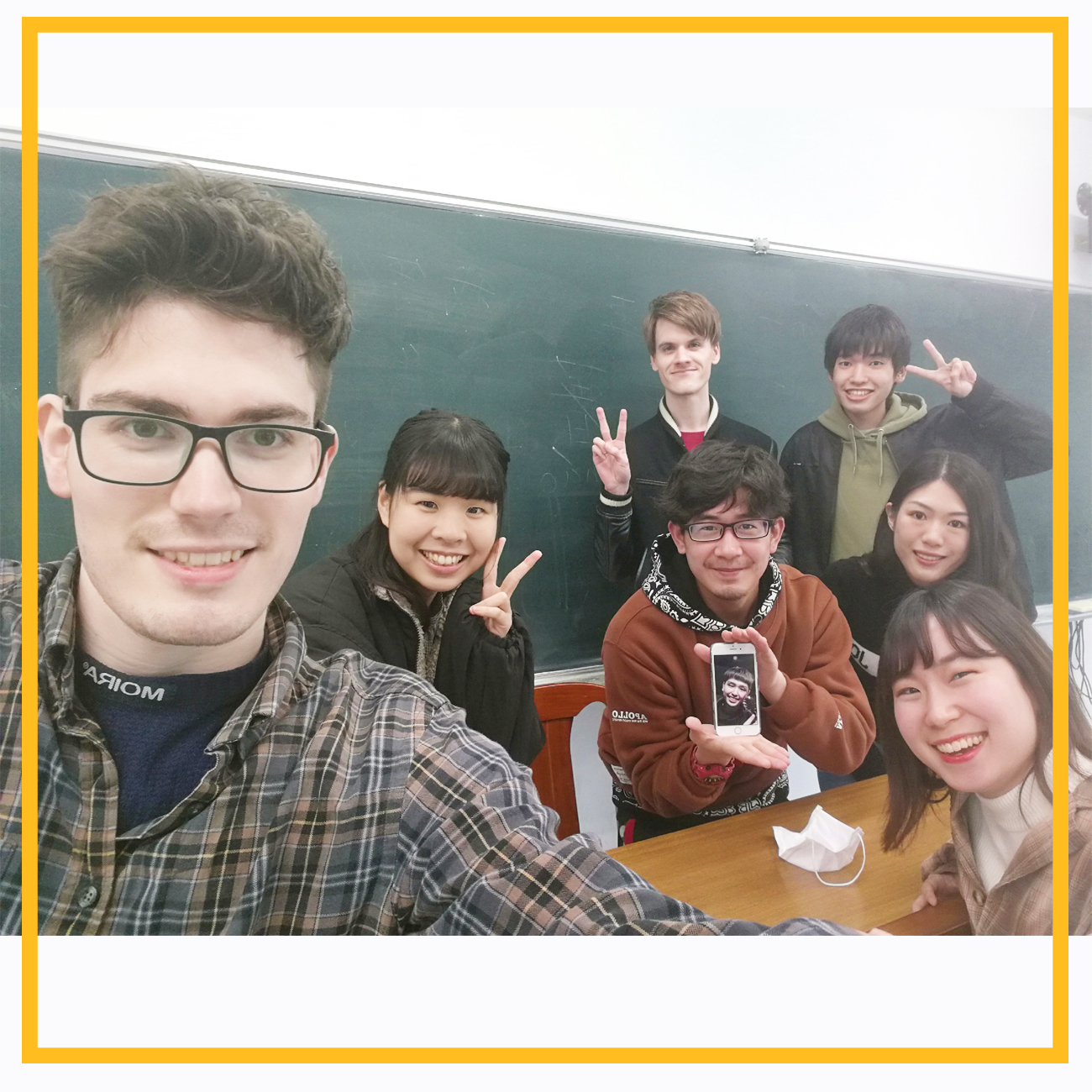Chinese Language Center Faculty- CHANG HSIUYU




Teaching Experience Sharing- Faculty- CHANG HSIUYU
During the pandemic, many foreigners were restricted from studying abroad, and this was the largest class I had taught since the pandemic broke out. In my class, there were a total of 8 students with extremely basic levels of Chinese (we started the course from Lesson four of “A Course in Contemporary Chinese”, Volume 1). The students came from Japan, the United States, the Czech Republic, and Germany respectively. I had spent half a year with them, leading them from a very basic level to an intermediate level (Lesson 6 of “A Course in Contemporary Chinese”, Volume 2). I benefited tremendously from this experience that I would like to share with you here.
First of all, it should be as simple and as clear as possible to teach beginner students.
As the Chinese idiom goes: " Teaching benefits teachers as well as students; A good teacher must be a good friend to students"(教學相長,亦師亦友). Teaching Chinese is a long process, and haste makes waste (欲速則不達). Therefore, at the beginning of my Chinese teaching career, I did not ask myself to teach students outstandingly or to expect any kind of result. First and foremost, I made sure students like me and would like to concentrate on my lectures. By doing so, it provided a good foundation for continuous teaching in the future. The so-called "Teaching benefits teachers as well as students"(教學相長) means that while teaching Chinese language and culture in class, I can also learn from my students' shortcomings in learning how to speak the Chinese language and develop better teaching methods to help them communicate effectively. For instance, the measure words learned in Lesson 4 of "Contemporary One" represented a huge challenge for foreign students, due to the fact that the students all come from different nations with different cultural backgrounds. Specifically, there are no concepts relevant to measure words in the mother tongue for students from European and American countries. Hence, classification and images were used to guide students to learn naturally. For example: I used the pictures of dogs and cats to illustrate that we use "zhī “(隻) to measure the number of most animals; the pictures of chairs, desks, papers, illustrating that we use “zhāng”(張) to measure the number of flat objects; the pictures of air conditioners, computers, and cameras, illustrating that “tái”(台) is used to measure the amount of most machine; and the pictures of jackets and trousers, illustrating that the number of most of the clothing is measured by the word “jiàn”(件).
Secondly, I always try my best to create a relaxed and enjoyable learning environment for students, in which they are motivated and are willing to take the initiative to learn. Given the difference of language and culture, it would too uninspiring to just explain the grammars and theories. There were two Japanese students who are often distracted in class, so it is even more critical to gather students’ attention. I make handouts with examples for each new vocabulary lesson, and explain the meaning in class. Afterward, I ask students to work in groups and use the vocabularies to answer questions or create sentences as revision helps to keep them focused. And I would walk down the stage to listen and correct their mistakes. When reviewing vocabularies, I would integrate the game of Bingo and Conversation Match in class to increase interaction in the classroom with individual or group competitions. Providing simple examples during the game helps to build a more lively and intriguing learning atmosphere.
Furthermore, practice makes perfect. I have been encouraging students to speak, so that they will have a sense of achievement. After all, students are the mainstay of teaching. The idea of enabling students to speak Chinese in real-life practice has been in place since the beginning of my curriculum. In general, the vocabulary and grammar expected for the day will be taught in 3 class periods (45 minutes each, approximately 2 periods per session). In the second half of the class period, vocabulary, text, and grammar are taught in a Q&A format, incorporating the lesson taught in the first half of the class period. For instance: When learning the words “yesterday/today/tomorrow/the day after tomorrow/week/Monday to Friday”, I show the calendar directly, explain the meaning and form a sentence to ask students questions such as “What day is today?”. Having learned the numbers, students are able to learn how to say Monday to Friday quickly. I then lengthen the sentence by asking “What day was yesterday and what did you do on the day?”. Similar questions are asked in groups as well for students to engage conversation until they have mastered the vocabularies. It’s important to make simple questions with standard pronunciation, the appropriate speed, and clear breaks, so that the students understand the questions properly and learn the correct pronunciation.
Last but not least, we must be patient with students, teach them in accordance with their aptitude, provide after-school counseling when it is needed. Regarding language learning, even the smartest students need to practice repetitively without exceptions. If students still cannot understand after several explanations, the teacher should adjust his or her language, and never show impatience, otherwise it will have a negative impact on the teaching. Some students may ask deeper questions, in particular, the Czech and German students asked a lot of questions that I had never thought of before. When students inquire questions, it means they listen the class carefully, which is a positive sign for me. I provide comprehensive answers if the questions involve my profession and knowledge; while students ask illogical questions, I answer them with humor to avoid embarrassment in class. Being a Chinese teacher at this center, I profoundly realize that teaching is a challenging career. During my four-year career, I experienced an unprecedented sense of achievement. I look forward to working with more students and teaching a wider variety of Chinese courses for further challenges and progress in my career in the future.
.

